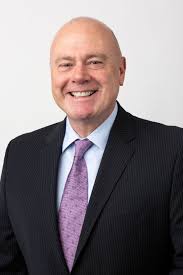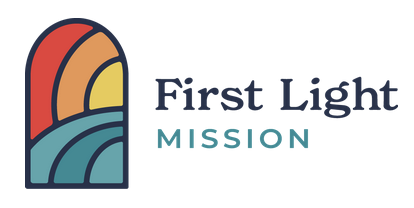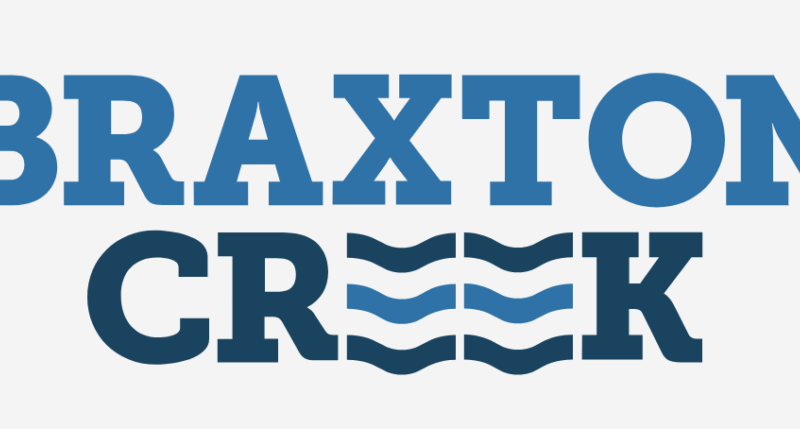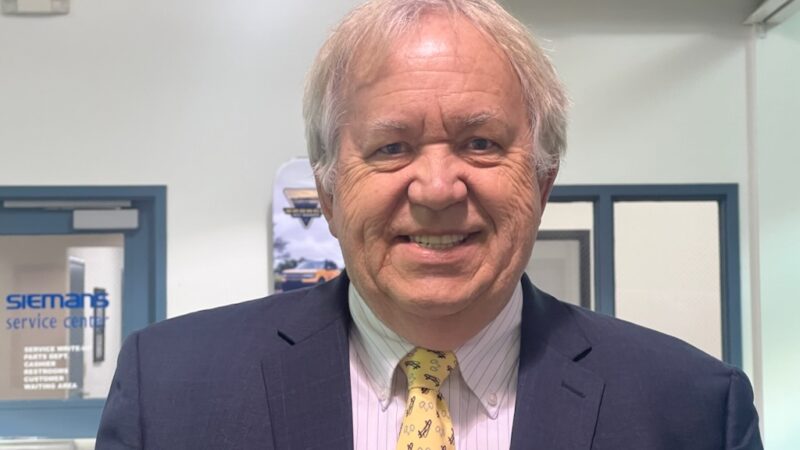Lemonis: Inventory Management Buoyed Profit in 2023 – RVBusiness – Breaking RV Industry News

LINCOLNSHIRE, Ill. – The cancellation of $900 million in new RV orders and an accelerated shift towards its used business helped bolster revenue and gross profit for Camping World (NYSE: CWH) during 2023, Marcus Lemonis, the company’s chairman and CEO, told investors during an earnings call Thursday (Feb. 22).
“While we recognize the cyclicality of our business, we also stand strong in recognizing how the business performs consistently over time,” Lemonis said during the call. “Early last year, we boldly forecast the industry slowdown we saw coming.”

At the beginning of 2023, Camping World had 16,000 model year 2022 units in stock.
“Today, we have less than 100. Today, we’re also sitting with less than 11,700 new model year ’23s, and we’re on track to be around 9,000 by the end of December, a significant improvement year-over-year,” said Lemonis. “And with the new model year 2024 quickly arriving, the cost of those units in our core segments are coming in more than 12% less, and we must remain steadfast in this model year elimination strategy.”
Full year-over-year operating highlights for Camping World showed revenue was $6.2 billion, a decrease of $740.5 million, or 10.6%; used vehicle revenue was a record $2.0 billion, an increase of $102.0 million, or 5.4%, and used vehicle unit sales were a record 56,823 units, an increase of 5,498 units, or 10.7%; new vehicle revenue was $2.6 billion, a decline of $651.8 million, or 20.2%; and new vehicle unit sales were 58,731 units, a decrease of 11,698 units, or 16.6%.
Average selling price of new and used vehicles declined 4.3% and 4.8%, respectively, and same store used vehicle unit sales increased 5.0%, while same store new vehicle unit sales decreased 22.1%.
“The execution of rigorous inventory management, however, comes at a short-term cost: higher wages to maintain the stability of our top performers, higher digital marketing costs to generate the activity and compressed front-end margins,” Lemonis said.
“This management mandated strategy will likely result in fourth quarter, historically, our industry’s toughest quarter with an EBITDA in the neighborhood of breakeven to slightly negative. Our investment in that, our team feels, is absolutely necessary. We believe this prudent approach to managing our inventory sets us up for market share and earnings growth in 2024. As a management team, we are adamant that this strategy will set us up for the next 48 months. We want to materially outpace our competitors and gain market share. We want to build strong alliances with manufacturers around the proper inventory levels and forecasting for them and us. We want to maximize the return of working capital to continue our supercharged acquisition plan. We want to increase the velocity of our turns in this higher floor plan interest environment,” he said. “And lastly, we want to continue to build our active buyer file to bolster Good Sam’s unprecedented growth.”
Participating on the call with Lemonis were Matthew Wagner, Camping World’s chief operating officer; and Lindsey Christen, Camping World’s chief administrative officer.
Wagner told investors Camping World sold more than 32,300 units in 2023, “an increase year-over-year, including 17,000 used units, a record for the third quarter. Our sales team absolutely crushed it,” he said. “The used business continues to thrive. And while we are focused on growing our market share of the used business by adjusting our procurement and remarketing efforts, we believe that we are positioning ourselves to substantially grow our market share of new units in 2024.”
He added, “Over the last few months, we have worked extensively with our key manufacturing partners such as Thor, Forest River and Winnebago to identify segments and price points that will yield a greater volume of new RV sales while maintaining healthy margins. Three months ago, we informed the market that we started to see an improvement in the year-over-year trend line of same-store sales. At that time, we saw the affordability curve beginning to bend. As we push that curve further into the quarter, we established greater evidence of the favorable impact of these price modifications. Throughout the fourth quarter, we will be focused on lending our inventory, refining our used procurement and setting the stage to grow our overall market share in 2024.”
Christen said the company, over the past 15 months, has been “thoughtful and forward-looking” when reviewing selling, general and administrative (SGA) expenses.
“We’re planning for leaner operations at our manufacturer exclusive locations as well as at a number of our planned acquisitions, which have smaller footprints,” she said. “We also believe we can run our existing stores more profitably in the current economic climate with a realistic view of the impact of gross profit reduction. As a result, we made the difficult decision at the end of the third quarter to reduce headcount by more than 1,000 people, around 7% of our workforce, and rightsized variable pay plans, resulting in about $60 million in annual SG&A savings. We will continue to balance investments in our workforce and growth.”
She said the company will continue to invest in employee experience and growth with an eye toward “best-in-class training, wages and benefits. We have and will continue to close locations that haven’t performed as expected. During the third quarter, we closed two retail locations and a distribution center. We also identified up to seven locations that were underperforming and will be closed in the fourth quarter. We have a corresponding plan to eliminate the real estate obligations for these closed locations through sales, sublease or lease terminations. We’ve also been on a robust acquisition path. Over the past year, we’ve added 16 locations and continue to add to our pipeline, including a 12-store chain we announced last week.
“While some deals fall out of our pipeline during the diligence process, the overall influx of potential deals remains very active. All in, we hope to end the 2024 calendar year with no less than 220-plus locations,” she concluded.
Before turning to the question and answer period, Lemonis said, “The willingness to take decisive action and mobilize quickly to execute is what makes our management team and our company unique, nimble, decisive and effective. With the last 48 months having generated over $2.4 billion in adjusted EBITDA, we are up for the challenge for the next 48. It is our expectation that in 2024, total company revenue and same-store unit sales will be positive and that Good Sam will continue to improve top line. Additionally, we expect overall company gross margins will be flat to slightly positive. With our disciplined approach to managing inventory, reductions in expenses (and) elimination of underperforming assets, it is our expectation to improve our SG&A as a percentage of gross by no less than 2%. These items, coupled with our store count growth, could result in an earnings increase in excess of 30% in 2024.”
On pricing over the next few quarters:
Wagner: We’ve been working steadfastly with the manufacturing partners to ensure that we’re starting to target these right price points, and it’s going to vary based upon the segment. I can tell you that in certain entry-level price points, especially travel trailers, we’re seeing some price concessions to the tune of 15-plus percent in some cases. And there’s other cases where we’re at the current moment, just seeing high single digits, give or take. So we’re being as particular as we can to target those certain segments where we know it’s going to yield an improvement in demand as we head into next year. And that’s really where we’re continuing to place our focus on driving average sales price (ASP) down.
Lemonis: What’s interesting about it is that we have always been consistent that the lower the price is on our in-stock units, a wider the funnel is to the addressable market. And I think when we look at growing our file to bolster Good Sam, we know that every single $1,000 that we drive down ASP, the funnel of available buyers equally gets wider. … We do not believe that demand for this lifestyle and customers’ enthusiasm from staying in the lifestyle has changed at all. … Matt and his team have been instrumental in understanding that in working with these manufacturers, lower-priced units means more volume. In order for us to get there, though, we have a little bit of work to do in the next 3, 4, 5 months to ensure that going from $43,000 as an average ASP in the last couple of months, we need to get down to like $38,000, $39,000. We are driving towards that target. Keep in mind that a lot of people are not going to forecast this properly. When you drive down ASPs, you will ratchet up volume but you will have less revenue. That’s OK for us. We’re looking for transaction count because transaction count leads to more service, more F&I, more Good Sam, more parts, et cetera. So we want to tell everybody upfront. This is going to be an ASP wide in the funnel volume game and that we will make up the revenue drop from declining ASPs with incremental accretive acquisitions.
On negotiating OEM pricing:
Wagner: I think that the manufacturers have been exceedingly effective at towing that fine line of knowing that they need to protect their margins and they need to maintain healthy margins because they need to continue to innovate and grow, while at the same time, de-contenting products, however, not to the extent whereby consumers are going to be turned off by it. But finally, and most importantly, they need to put a tremendous amount of pressure on suppliers to ensure that we’re cleansing ourselves of products that could still be lingering from some suppliers well over 1.5 years, 2 years ago.
Lemonis: Let’s even dissect it a little bit more. When you look at the overall manufacturing process, you segment it into towables and motorhomes. And we know that on the motorhome side, it’s a bit of a tough road for motorhome manufacturers because they’re dealing with OEMs who are providing chassis who could potentially continue to drive up prices, having to deal with labor issues at UAW, all those things. The core meat of the market for our company, while we still are a big part of the motorhome business is on the towable side. And if you start to break it down and dissect how that product is made, it starts with the frame. And whether it’s the frame, whether it’s furniture, whether it’s slides, whether it’s appliances, those things that I just mentioned make up the bulk of the unit.
I think this industry needs to continue to diversify its sources of those products to ensure that there’s diversity in options for those manufacturers and whether manufacturers are starting up their own train business or there’s other entries into the market, we have to figure out as an industry how to have a more healthy environment so that competition drives innovation. So that competition drives down prices, so that competition drives down options. Those are things that we believe we have to see as an overall industry.
The part that we play in that? Well, we believe that as the largest provider of products to the consumer, we have to have a little bit of a heavier hand, which is why we’re in the furniture business, which is why we play a big part in the appliance business, which is why we want to work with manufacturers on how to re-engineer and re-innovate these products to make them more affordable for consumers.
On pricing:
Wagner: Historically, we try to target that $200 to $225 monthly payment. And frankly, that monthly payment has gone up based upon our overall product mix. We’ve been working diligently to get that back down to where it once was, which is going to be an assortment of products that we’re going to be able to retail for 20k and under.
Lemonis: We think that there needs to be ASP declines in all the segments, starting with diesel, the gas, the fifth wheels. This isn’t just going to turn into an industry that just sells inexpensive trailers. But as we want to bring new entrants into the market as we want to attract new people into the flywheel of this great lifestyle, we have to do it in the most affordable way. If you look at our advertising across all the different mediums, we are a payment retailer. We are not a price retailer. Everybody needs to make money in this process. And so when we look at it, we look at 180, 210 and 240 and the payment strata and really try to work towards a $5, $10, $15, $20 – a day payment option for people going from the entry-level towable all the way up to the motorhome. It is an absolute goal of ours as we build the matrix that we think about where the prices need to be and we connect that into the formula where the interest rates are and now we have to hit that number. That’s how a consumer buys. They buy on monthly payment. They don’t know if 17,950 is a great deal, but they do know if they can afford $189 or $239. We start bumping over $350, $400. It becomes a bit of a head scratcher for people. We need to take the head scratching away from the fund that they’re going to have in being in the RV lifestyle.
On real estate strategy:
Lemonis: I want to be clear about one thing we set a target to get to 320 over the next 4, 5 years, 320 locations, and that is an absolute mandate to march towards. But we will not do deals just to get to 320. … A 12 store chain that’s going to generate, in our opinion, over a mature period of time could be $150 million to $200 million of revenue. But when those stores are a little bit smaller with a lower fixed cost, we think those things will perform at a higher EBITDA margin, which means for our shareholders, we’re delivering a better return on capital, which is the mandate that they expect from us.
On the total of 2022 and 2023 model year units industry wide.
Wagner: It’s tough to gauge the entirety of the industry, but I can tell you based upon a number of the deals that we are taking a look at right now, most of our competitors in our far less advantageous position compared to us. And that’s really the only insight that I could share at this point.
Lemonis: I’m going to be a little more transparent than that. We know that inventory aging is our path to accretive and opportunistic acquisitions, period end of story. And if we look at some of the ones we’ve done recently, it unfortunately is because of mismanagement of inventory. The only reason we have 122s on the ground is because we bought dealerships that had 22s on the ground. That inventory is largely not anything that we purchased ourselves. We purchased it through acquisitions, and that was a factor in the goodwill analysis of that transaction. As we look to make more acquisitions, please understand that, that 22 number could potentially grow again, but they’re coming in at the appropriate values. Our transactions today are anywhere from 65% to 70% of the original invoice value is how we’re approaching those transactions where the acquisition is going to be made.
lines.






